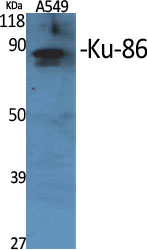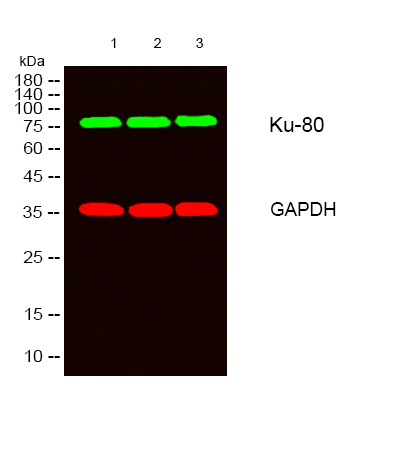Recombinant Human MUC1 protein ,N- His Tag
- Catalog No.:YD2288
- Reactivity:Human
- Purity:
- >90% as determined by SDS-PAGE
- In Vivo:
- Please contact with the lab for this information.
- Protein Name:
- Mucin-1 (MUC-1) (Breast carcinoma-associated antigen DF3) (Carcinoma-associated mucin) (Episialin) (H23AG) (Krebs von den Lungen-6) (KL-6) (PEMT) (Peanut-reactive urinary mucin) (PUM) (Polymorphic epi
- Sequence:
- A DNA sequence encoding the Human MUC1 (Ser24-Pro146)was fused with the N-terminal His Tag
- Human Swiss Prot No:
- P15941
- Formulation:
- Supplied as solution form in PBS pH 7.5 ./ Lyophilized from PBS pH 7.5 .
- Source:
- E. coli
- Dilution:
- Reconstitute in sterile water for a stock solution
- Concentration:
- >90% as determined by SDS-PAGE
- Storage Stability:
- Use a manual defrost freezer and avoid repeated freeze thaw cycles. Store at 2 to 8 °C for one week . Store at -20 to -80 °C for twelve months from the date of receipt.
- Other Name:
- MUC-1,Breast carcinoma-associated antigen DF3,Cancer antigen 15-3,CA 15-3,Carcinoma-associated mucin,Episialin,H23AG,Krebs von den Lungen-6,KL-6 ,PEMT,Peanut-reactive urinary mucin,PUM,Polymorphic epithelial mucin,PEM,Tumor-associated epithelial membrane antigen,EMA,Tumor-associated mucin ,CD_antigen: CD227
- Subcellular Location:
- Apical cell membrane ; Single-pass type I membrane protein . Exclusively located in the apical domain of the plasma membrane of highly polarized epithelial cells. After endocytosis, internalized and recycled to the cell membrane. Located to microvilli and to the tips of long filopodial protusions.; [Isoform 5]: Secreted.; [Isoform Y]: Secreted.; [Isoform 9]: Secreted.; [Mucin-1 subunit beta]: Cell membrane. Cytoplasm. Nucleus. On EGF and PDGFRB stimulation, transported to the nucleus through interaction with CTNNB1, a process which is stimulated by phosphorylation. On HRG stimulation, colocalizes with JUP/gamma-catenin at the nucleus.
- Expression:
- Expressed on the apical surface of epithelial cells, especially of airway passages, breast and uterus. Also expressed in activated and unactivated T-cells. Overexpressed in epithelial tumors, such as breast or ovarian cancer and also in non-epithelial tumor cells. Isoform Y is expressed in tumor cells only.
- June 19-2018
- WESTERN IMMUNOBLOTTING PROTOCOL
- June 19-2018
- IMMUNOHISTOCHEMISTRY-PARAFFIN PROTOCOL
- June 19-2018
- IMMUNOFLUORESCENCE PROTOCOL
- September 08-2020
- FLOW-CYTOMEYRT-PROTOCOL
- May 20-2022
- Cell-Based ELISA│解您多样本WB检测之困扰
- July 13-2018
- CELL-BASED-ELISA-PROTOCOL-FOR-ACETYL-PROTEIN
- July 13-2018
- CELL-BASED-ELISA-PROTOCOL-FOR-PHOSPHO-PROTEIN
- July 13-2018
- Antibody-FAQs

